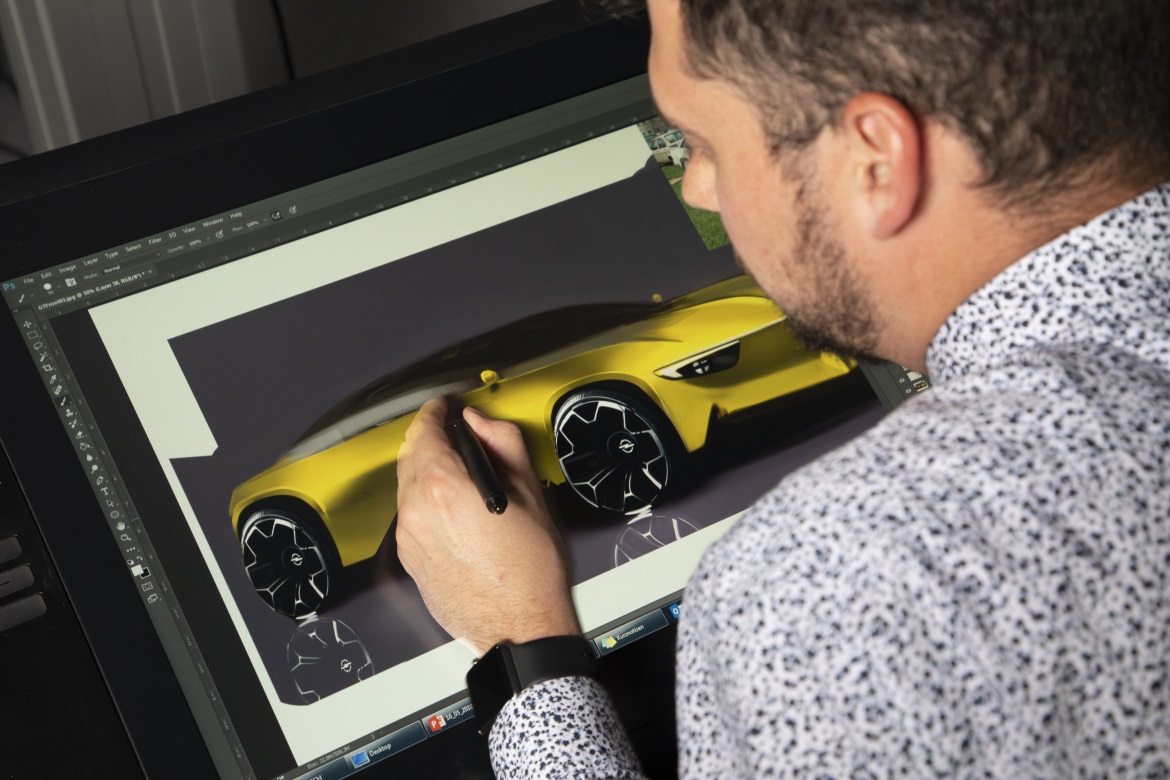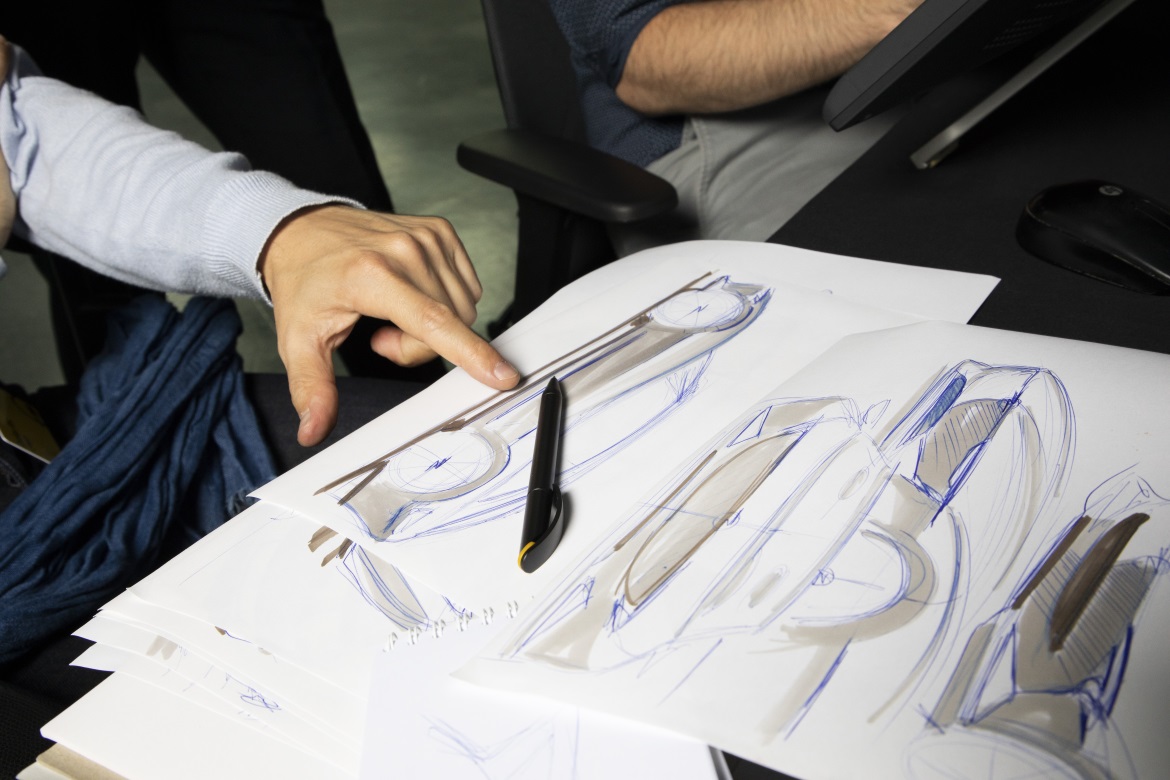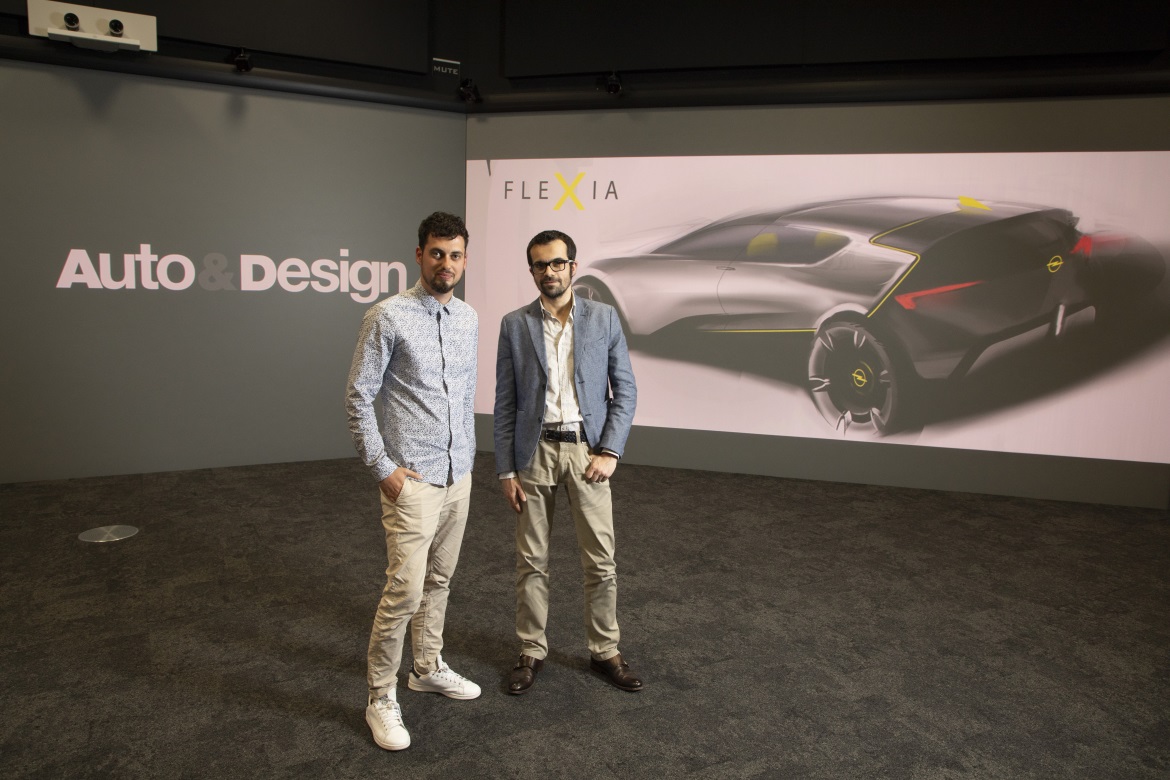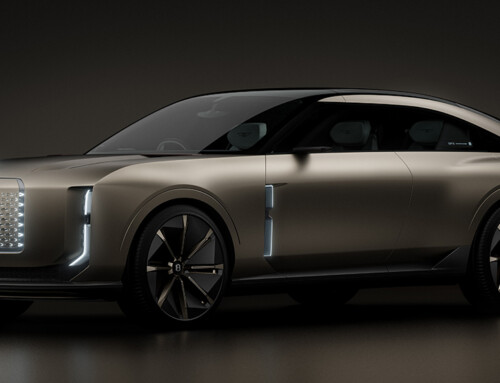What does German identity mean? This is the crucial question around which the stylistic (and other) destinies of the Blitz revolve. Less than a year after its acquisition by PSA, the Rüsselsheim office is investigating the universe of formal meanings with unprecedented finesse.
“The brand’s mission has always been to democratise technology and style”, says Mark Adams, head of design since 2002. “Today we have to refine our language in order to remain true to this philosophy, emphasising the Teutonic origins of our forms. But be careful: this is not a revolution, but a fine process of evolution, which we wish to make accessible and understandable to all”.
That’s why, for the first time, the brand has opened its Design Center ahead of the presentation of a prototype, revealing the entire conception process: everything is divided into four phases, until next November. Auto&Design is one of the very few periodicals in Europe admitted to the process. “Opel is also geographically on the borderline between two worlds: on the one hand the Latin sphere, with its emotion, white houses and a taste for the pleasures of life like cooking, on the other Nordic spaces with their rationality, the aesthetics of bricks and less attention to hedonism,” Adams says. “On the one hand a certain sense of the Baroque, on the other absolute purity. For us it is a great expressive opportunity, two opposites to be synthesised through a sign of our own”.
The key to the operation is precisely German identity: “Precise, centred on detail, visually organised and pure: four characteristics that have remained unchanged over the centuries, and that can even be found in the work of intellectuals such as Martin Luther, Friedrich, Goethe or Dürer. And that will become the leitmotif of future Opels”. In what way? To find out about this you will have to wait for the next episode in July.
















